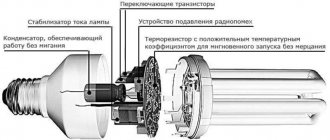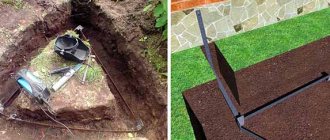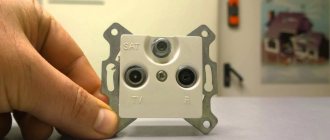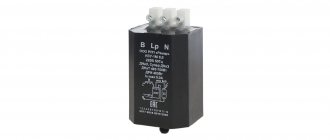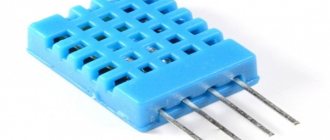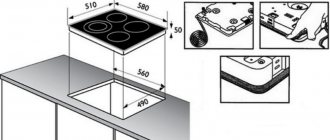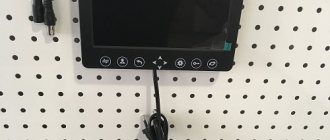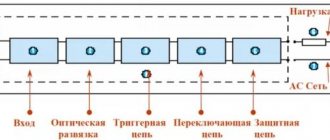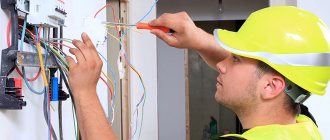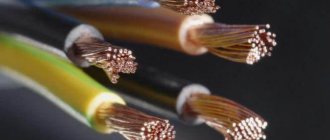General information about connection methods
Here it’s worth starting with the fact that twisting wires is a connection method that appeared around the same time as electrification itself. However, a huge amount of time has passed since then. Advances in technology have led to the emergence of a newer method - Wago terminal blocks. On the one hand, after such explanations, it becomes very simple to answer the question of which is better - twisting or terminal block. Newer technologies are always ahead of older ones; it is more convenient and practical, as well as more aesthetically pleasing. But in this case, “Vago” also has certain disadvantages.
Today we can say that both methods have the right to exist and be used. However, for example, according to the PUE, ordinary twisting cannot be carried out; it is necessary to carry out either soldering or welding.
When answering the question of which is better - twisting or terminal block, it is necessary to take into account an important fact - where exactly the wires are used. Let's say that the fire inspection at all objects subject to inspection will very quickly stop ordinary twisting. This is due to the fact that very often the cause of a fire is a poor-quality connection. Copper and aluminum wires are twisted together, hard and soft, etc. All this may ultimately cause a fire.
Wire connection methods
1. Twisted wire connections. Due to its simplicity, this is the most common method. To do this, just take two wires, remove the insulation (for reliable twisting, at least 5 cm of insulation is removed), then the bare wires are twisted together.
The twisted bare conductors are insulated with conventional insulating PVC tape. In place of the insulating tape, you can use special “twist caps”. Twisting caps are screwed onto the connected wires, thereby insulating the exposed parts and additionally pressing the electrical contact.
It is not permissible to twist wires of dissimilar metals, such as copper and aluminum.
2. Connecting wires by soldering. Using soldering, making connections takes a little more time, but this method is more reliable than conventional twisting.
When twisting contacts, no matter how good it is, the connection points have some resistance and when current flows, the twisted contacts overheat.
The consequences of poor quality twisting are melting of the insulation at the joints, short circuit and fire.
Soldering guarantees reliable electrical contact with low resistance and the necessary mechanical strength.
For soldering, ordinary tin-lead solder and rosin are used.3. Using terminal blocks. The terminal block itself is an insulating plate with contacts. Using terminal blocks, you can connect copper wires to aluminum. Terminal blocks, based on the method of securing the wires in them, are divided into terminal blocks with a tightening screw and terminal blocks with clamping plates. Terminal blocks in which the wires are pressed with a screw have one drawback. In them, the wire can be damaged by the twist itself when the contact is tightened.
This is especially true when connecting aluminum or stranded wires. Terminals with pressure plates are more reliable than screw terminals, since when tightened, the wire is pressed against the terminal by the plate. 4. Spring terminals. Probably the fastest and most efficient way to connect wires. To do this, the insulation is removed from the conductive core and inserted into the terminal. They differ from screw ones in that the wires are fixed not with a screw, but with a spring clamp. Today there are a lot of spring-type clamps, the most common of them are terminal blocks. They are used to connect both soft stranded and single-core wires of different sections.
These terminals can also be used to connect copper and aluminum wires. For this purpose, special “Wago” terminal blocks are used.
They use contacts made of a bimetallic plate coated with a special paste that prevents oxidation of the wires.5. Branch compression. Branch clamps, or “nuts” as they are popularly called, are used to connect to the main line without creating a break in it. The clamp itself consists of three metal plates with screws and an insulating box in which these plates are located. Branch clamp is often used to connect copper and aluminum wires, for example to connect to an aluminum overhead line.
Terminal Applications
So, which is better - twisting or terminal block? It is important to understand that devices are not a panacea in terms of protection and reliability; they can also fail. Such equipment is usually designed for a load of 3.5 to 5 kW. In the event of a terminal melting, you need to understand that a voltage of greater power is flowing in the network than it should be. This is usually a problem with a missing or poor functioning circuit breaker that is supposed to monitor this. Most often, this problem occurs in old houses, where such equipment simply does not exist.
You can take as an example the excellent performance of terminals in new buildings. At such facilities, Wago devices are installed everywhere. Residents of such houses almost never complain about problems with electrical wiring. At the same time, you need to understand that separate power lines are laid for such consumers of electrical energy as boilers, washing machines, dishwashers and other equipment. Their main difference from ordinary ones is the absence of joints; they are always solid. The terminals are used only for laying socket groups, for lighting, etc. That is, for those consumers who initially work with low power voltage.
It turns out that if you choose between twisting or a terminal block, the second one will always win? This is not entirely true. In new buildings, twisting without welding and soldering is also used, but with one condition. Special PPE terminals are used for it. They have managed to establish themselves as high-quality devices for connecting wires. But they have a certain drawback. Arranging wiring with PPE terminals is a labor-intensive and time-consuming task. And on large construction sites, it is the factors of time and speed that often play a decisive role.
Cable connection methods
When wondering what is better - twisting or a terminal block, you need to understand where such connection methods can be used. One of the common connection methods is the use of self-clamping terminal blocks. Very often, when working with electrical wiring, you have to connect aluminum and copper wires together. In such cases, the option of twisting is eliminated immediately, since the cables differ in material. Before the widespread use of Vago products, it was believed that a bolted connection was best. Currently, two types of Wago devices are used.
The first type of spring connection is universal terminals that have a tension spring in their design. The second type is flat-spring specialized terminals. The first option is used if it is necessary to connect multi-core, that is, soft wires. The second option is used in places where single-core (solid) wires are switched.
The connection process via terminals is quite simple. It is necessary to insert the cable into the flat-spring clamp until it stops. In this case, optimal pressure will be created on the contact, regardless of its cross-section. This type of clamp does an excellent job of pressing the wire cores to the busbar, eliminating the possibility of such problems as spontaneous disconnection. To ensure ease of measurement or inspection, the clamp has a special hole that allows access to the electrical busbar. If connected correctly, the possibility of a short circuit and touching other live elements will also be completely excluded.
Methods for connecting conductors
There are several types of creating contact between conductors in a junction box. The choice depends on the material of the cores, environmental conditions, the number of wires, and the cross-section of the connected cables.
The most common connection methods:
- terminal blocks;
- wago spring terminals;
- self-insulating clamps;
- twist;
- crimping;
- soldering;
- nut type clamp;
- bolted connection.
According to the requirements of the PUE, you cannot simply twist the wires. This is not safe for living.
Terminal blocks
Terminals are understood as plastic products with an internal brass sleeve with screws on both sides. Conductors are inserted into these places and tightly fixed. The method is very common when connecting wires in a junction box.
- different diameters of inlet holes;
- low cost;
- reliability;
- simplicity and ease of installation;
- Possibility of connecting copper and aluminum.
- low quality of the product itself;
- only two wires can be assembled;
- risk of rupture of thin veins.
Advantages of Wago products
Which is better - twisted or Wago terminal block? To more fully answer this question, you can consider the advantage of terminals.
- One of the most important advantages is that the quality of switching with the Vago spring terminal will be at a high level, regardless of how qualified the technician performed it.
- Such equipment boasts high connection speed and no need to use specialized tools.
- Provides high protection against accidental contact with any current-carrying parts of the device.
- The reliability of contacts is at a very high level.
- The terminals will allow you to make the necessary changes to the wiring without disturbing the quality connection.
- Each wire has its own separate socket.
- The clamps have good shock resistance and vibration resistance.
- In automatic mode, it is possible to regulate the clamping force on the wire.
- There is no need to carry out special maintenance work.
- The electrical conductors themselves in such devices are characterized by good resistance to damage.
- Last on the list, but not least important advantage is the good price-quality ratio of the product.
Wago 222 series products
This company produces many varieties of its products. One of the fairly popular series is the Wago 222 terminal block.
This product is intended for connecting or branching both stranded and single-core wires. They are allowed to be used in only alternating electric current circuits with a maximum voltage of 380 V and a frequency of 50 Hz. Initially, the Wago 222 terminal block was intended for switching copper conductors. However, it is also possible to connect aluminum cables if the device is filled with conductive paste. In addition, the equipment is universal, which allows it to be used both for lighting devices and in distribution boards.
As for the external data of the Wago 413 terminal block (full name of the series 222-413), it is very similar to other well-known series such as 273 and 773. It is quite small in size and has good protection of live parts. A small feature of the device is the presence of a test hole. This development is one of the latest, and now it has become very popular in the energy sector. The Wago 2, 3 and 5-wire terminal block is available. In other words, it is possible to connect two, three or five conductors at the same time. It is allowed to switch cables with a diameter from 0.08 to 4 mm2.
The main characteristics of the device are as follows:
- rated operating voltage 400 V or 4 kV;
- rated operating current value for a cable with a diameter of 4 mm2 - 32 A, for a cable 2.5 mm2 - 24 A;
- the cross-section of single-core or stranded conductors should be in the range of 0.08-2.5 mm2;
- connection of fine-wire cables is permitted with a cross-section of 0.08-4 mm2.
Wago 221 series
The Wago 221 terminal block is a universal lever-type compact connecting device. With its help, you can reliably connect conductors made of copper materials with a diameter of 0.2 to 4 mm2. It is allowed to connect both single-core and multi-core cables. A special feature of the 221 series is that it is perfect for creating both a temporary connection and a permanent one. In electrical engineering, such devices are usually used to connect wires in distribution boards, switchboards or junction boxes.
Another feature of such switching devices is that they are excellent for use both in a regular home network with 220 V or 380 V, and for connecting various components of low-voltage equipment. In addition, this series has a number of certain advantages.
- High speed of installation, which is accompanied by minimal risk of error. Even when assembled by an inexperienced specialist, poor-quality connections are virtually eliminated due to the transparent body and ease of assembly.
- High connection reliability is accompanied by low equipment cost.
- This series of terminals is convenient to use in confined spaces where access to wires is difficult for some reason.
- To set up the connection, you only need to have a minimum kit for stripping the cable insulation. There is no need to use specialized installation equipment.
- As for the rated operating current, for example, it is 32 A. It is also important to note here that if all connection rules are followed, the terminal will not overheat when the current increases above the rated limit.
ADVANTAGES OF WAGO TERMINALS
ADVANTAGES OF WAGO TERMINALS
- 12.02.2020
- #articles
Any electrical work involves connecting wires to each other. Several decades ago, this procedure required twisting or additional soldering, which takes a lot of time and requires special skills. One of the disadvantages of such methods is the sloppy final result. This kind of trouble can be resolved with the help of screw clamps, which are also not easy to deal with - if you “under-tighten” or “over-tighten”, the contact turns out to be weak. If we consider the first situation, the connection point is subject to overheating, which can lead to a fire, and in the second case, the wire or terminal may break. You can get rid of such problems using Wago
. The connection method using terminal blocks from this company is based on insulated spring clamps, which can ensure the reliability and quality of the work performed.
Compared to twists or solders, which are permanent connections, Wago
are subject to quick uncoupling, which will allow you not only to change the circuit, but also to quickly connect an additional circuit or device.
The use of Wago terminals does not require working with additional tools - you only need a device designed to strip the wire from the insulating layer.
After removing the insulating layer, simply insert the wire into the terminal block and secure it. In addition, using Wago terminals, it is possible to connect or extend wires made of different materials and having different cross-sections.
Connecting copper and aluminum wires by twisting is prohibited, but it can be done using Wago terminal blocks; the connection point will be reliable and neat.
Wago terminal blocks: how to use
Quite often, Wago
used in distribution boards or for connecting lighting equipment. Using these devices, you can connect both single-core and multi-core wires.
Terminal blocks have different series, which depend on the installation location or the requirements for the future connection.
Wago terminals are available in two versions:
- Disposable.
Such terminals cannot be removed from their wires and reused. - Reusable
. The wire is fixed in the device by removing a special clamp.
Using the example of the most popular series of terminals, we will consider options for their use:
Wago 222
– reusable terminals. To fix the wire, you must use a special orange lever, which allows you to disconnect the contact if there is a need to reconfigure the circuit or when testing the entire circuit.
Each conductor must be inserted into a separate connector socket. The basis of the terminal is a flat-spring clamp, which helps to secure a conductor with a cross-section of up to 4 square mm.
Installation is carried out as follows:
- the wire is stripped of approximately 1 cm of insulating material;
- the flag-clamp is raised;
- the wire is inserted, after which the clamp is released.
Due to the small dimensions of the device, it can even be placed under a switch or socket. This type of terminal blocks does not require a crimping procedure for a stranded conductor, which significantly saves time when performing work.
Other Wago products
The Wago 4 terminal block, for example, designed to connect four wires, has the following parameters. Firstly, it is designed to connect only single-core wires. Secondly, a flat-spring version is used as a connecting clamp. Thirdly, the cross-section of the connected conductors can be from 0.5 to 2.5 mm2.
As for the nominal parameters, for voltage this figure is 450 V, and for current - 24 A.
Today there is a special development - series 773. It was specially produced for use in switchboards. These may be Wago 5 773 series terminal blocks or others. In this case, the number 5 will indicate the number of possible connected wires. In general, depending on your needs and model, you can connect from 2 to 8 cables. As for the clamp model, it is flat-spring. It is allowed to connect single-core electrical cables with a cross-section from 0.75 to 2.5 square millimeters to such a terminal block. The most commonly used are 1.5 and 2.5 mm2 conductors. Rated operating voltage - 400 V.
Another series 273 is also used in distribution boards. However, here the cross-section has a wider range - from 1.5 to 4 mm2. The rated operating voltage is the same as the 773 series, and this is no coincidence. Most often, 273 terminals are used as an addition to the previous ones. That is, episode 273 could be 3x. Wago terminal blocks of this category, that is, 273, are usually used in cases where it is necessary to connect conductors with a cross-section of more than 2.5 mm2.
There are separate switching devices of the 224 series, which are designed for use only with lighting devices, for example. These terminal blocks are Wago 3-224, that is, they can be used for switching three wires. There is an assembly that has only two cable sockets. The operating voltage of the device is 400 V, and the cable cross-section can be 0.5-2.5 mm2. The peculiarity of this equipment is that on the luminaire side the clamps are designed for multi-core and fine-core cables. On the network side there is a flat-spring clamp, which is designed to connect a single-core wire.
WAGO or twist
Did you like the video? Subscribe to our channel!
There is still an unresolved dispute among professional electricians about whether WAGO or twisting of conductors followed by welding or soldering of the connection is better. In this article we will look at the most popular series of terminals and conduct a comparative analysis of connections made by twisting and using WAGO terminal blocks.
Series 773
Connection terminals with automatic spring-loaded clamps and opaque housing. This series is designed to connect up to six stranded or solid conductors with a cross-section range from 1.5 mm2 to 6 mm2. Designed for operation at temperatures up to +60°C with a rated operating voltage of 400 V and a current of up to 41 A.
Series 2273
The terminal blocks of this series differ from the previous one in their more compact dimensions, which is important, especially when installation is carried out in conditions of lack of free space. In addition, the transparent housing of the terminals in this series allows you to visually assess the quality of the connection. The range of connected conductors and the required stripping length are applied to the surface of the housing with paint.
Rated for a nominal voltage of 450 V and a current of up to 24 A (for copper conductors) or 16 A (for aluminum conductors)
A distinctive feature of this series of terminal blocks - WAGO for connecting wires, is the ability to connect copper and aluminum conductors. This became possible thanks to the use of a special paste that removes the film of oxides from the surface of the aluminum core and prevents their re-formation.
Series 222
Universal terminal clamps for reusable use. The connection of wires with WAGO 222 series terminals is carried out in this way: a conductor stripped to a depth of 10 mm is inserted into the contact socket and clamped with a special lever.
When the contact needs to be disconnected, just lift the clamping lever and remove the conductor from the socket.
Designed for connecting single-wire conductors with a cross-section range from 0.08 mm2 to 2.5 mm2 and stranded conductors with a cross-section from 0.08 mm2 to 4 mm2. Terminal blocks of this series are designed for an operating voltage of 400 V and a current of 32 A. The rated operating temperature is no more than +40°C.
Episode 221
It is a compact modification of the universal terminals of the previous series. Designed for connecting multi-core current-carrying conductors with a cross-section from 0.14 to 4 mm2 and single-wire conductors with a cross-section range from 0.2 to 4 mm2. The terminal blocks can withstand operating voltages up to 450 V and currents up to 32 A. The operating temperature should not exceed +85°C.
Thanks to the transparent case, you can check the quality of the connection at any time.
Advantages of connecting conductors using WAGO terminal blocks
- quick installation and dismantling of connections;
- there is no need for welding or soldering equipment;
- the ability to interconnect copper and aluminum conductors;
- no need for insulating tape or heat-shrinkable tubing;
- The case has a test window that allows you to ring the connection for a break.
Disadvantages of terminal connections
- limited range of cross-sections of connected conductors;
- lower, compared to soldered or welded twist, long-term current load.
There are a huge number of videos posted on the Internet, the authors of which present the results of test tests of terminal blocks performed under triple current load conditions, which, unfortunately, do not speak in favor of this type of connection. However, there is no data that confirms the reliability of insulated connections made by welding or twist soldering.
Therefore, it should be remembered that you need to use only original terminal blocks and operate them in accordance with the rated technical specifications. It is especially necessary to take into account the type of time-current characteristics of circuit breakers, since some models do not turn off the network during current overloads of 13% lasting more than 60 minutes.
Thus, the choice of the method of connecting WAGO conductors or soldering depends only on the subjective preferences of the specialist performing the installation. The main thing is that it is done efficiently and in compliance with all safety requirements.
PPE type clamps
So, what is more reliable - twisting or terminal block? As noted earlier, you can use a special device for twisting - an insulating connecting clamp or PPE. It can only be used for single-core cables, whose total cross-sectional value will not exceed 20 mm2, and the minimum cross-section will be 2.5 mm2. The body of such devices is usually made of insulating material. It can be polyamide, nylon, fire-resistant PVC. Thanks to this, there is no need for additional subsequent insulation.
The connection occurs according to the following principle: the insulation is removed from the end of the wire by approximately 10-15 mm. The cables are collected into one bundle, and PPE is screwed onto them. It is necessary to screw clockwise until it stops. Caps of this type are very easy to install and quite convenient. But they have a significant drawback - they are much inferior to terminal strips in the quality of twisting, so they are used much less often.
Twisting or terminals - that is the question
Twisting wires is the most common and accessible connection method. It is enough to peel the insulation around the wire a few centimeters once, and then use pliers to twist the two wires together. Moreover, according to the tests carried out, the resistance of such a connection is neither more nor less, but 302 μOhm.
Terminal clamps appeared not so long ago, but they have already gained great popularity among electricians. Connecting wires with Vago terminal blocks and the like is even easier than using twists. To do this, it is enough to remove the insulation from the wires, and then press the wires with the terminal block keys, ensuring a fairly reliable connection.
The resistance measurement of such a contact will be about 458 μOhm, which is slightly higher than that of twists.
Why not twist?
Here it’s worth starting right away with the fact that according to the rules of electrical installations (PUE), twisting is completely prohibited, although most connections begin with it. In order for a prohibited twist to become a number of permitted connections, it must be additionally equipped with a special device. In this case, PPE became such a device. Plastic caps with a metal spring inside were supposed to hold the wires firmly. However, their small size led to the fact that it was necessary to reduce the twist length to 10-15 mm, and this undoubtedly negatively affects the quality and reliability of the connection.
Separately, it is worth noting that there is the possibility of soldering or twist welding as an additional way to increase the reliability of switching. However, this method is much more labor-intensive than using a conventional terminal block. But, on the other hand, if you compare only the reliability of the connection, then welding or soldering will undoubtedly be the best choice.

